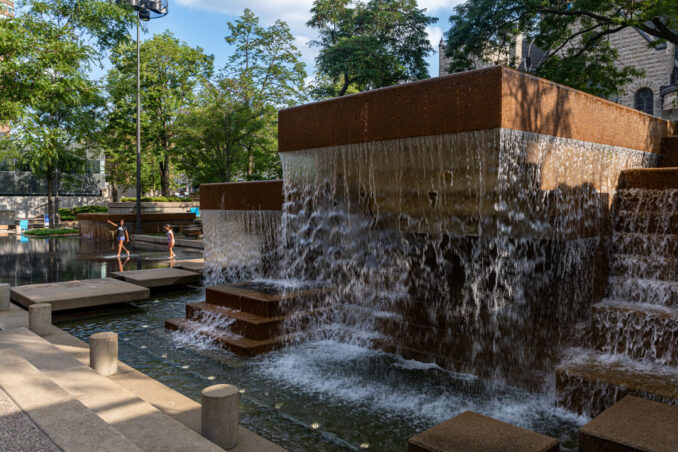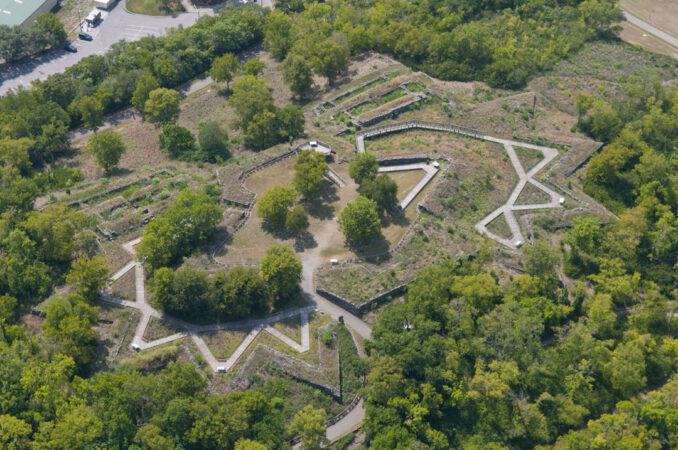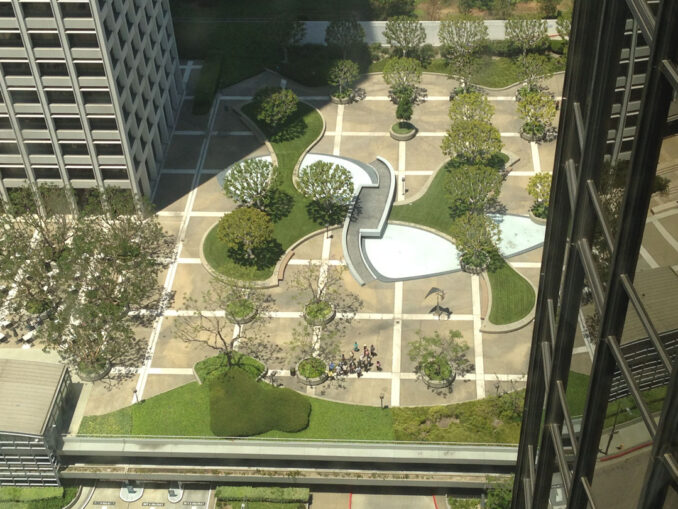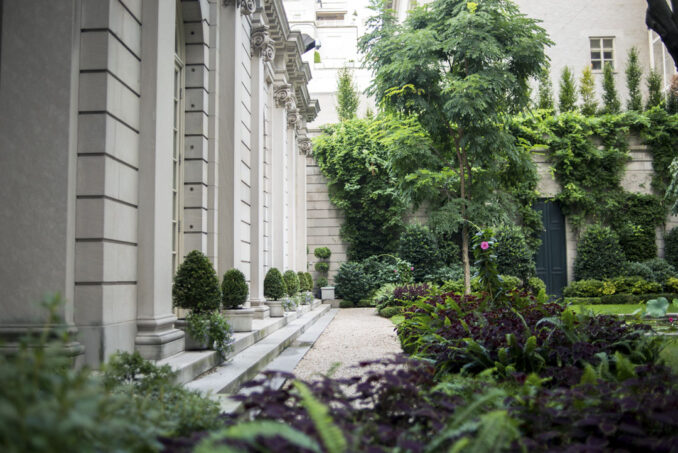
The Cultural Landscape Foundation (TCLF) has recently released Landslide 2023: 25 Years/25 Saved, a report and digital exhibition that features 25 landscapes and landscape groupings, representing 40 sites, that have been saved and protected for future generations due to TCLF’s advocacy, individually and in partnership with other organizations. TCLF is proud to celebrate its 25th anniversary this year. To mark this special occasion, the annual thematic Landslide edition is dedicated to success stories related to advocacy and public engagement. Unlike previous editions, this one doesn’t focus on threatened landscapes or landscape features. Instead, it aims to showcase new opportunities, challenges, and possibilities as TCLF expands its research and broadens its perspective.

With the public’s growing interest and appreciation of cultural landscapes, TCLF plans to capitalize on this momentum and keep raising awareness about the crucial need to preserve and protect them. The sites in Landslide 2023: 25 Years/25 Saved range in scale from the intimate Russell Page-designed viewing garden at the Frick Collection in New York City to vast expanses such as Bears Ears National Monument in Utah. More than 60 Landslide sites have been saved since TCLF’s creation, and nearly 150 more are currently at-risk.

Landslide 2023: 25 Years/25 Saved provides an overview of advocacy efforts and the advocates, often working together in strategic partnerships, who have helped set the agenda, build public awareness and engagement, empower stewards, get a seat at the table, secure media coverage, and lead the effort to sympathetically manage change at culturally significant sites.
TCLF is an education and advocacy organization with a mission of “connecting people to places.” TCLF consistently advocates the need to “make visible, instill value, and engage.” And, because change is inevitable, especially with landscapes, the foundation’s advocacy and engagement strategies are focused on “managing change.” TCLF recognizes that landscapes have different “carrying capacities” for change depending on their integrity and historical significance. When it comes to important landscapes, the idea is to do no harm during rehabilitation efforts, which was the case at Minneapolis’ Peavey Plaza, Park Central Square in Springfield, MO, and the Quarry Amphitheatre at the University of Southern California in Santa Cruz.
“Advocacy is at TCLF’s core, and it’s vital in public engagement and coalition building,” said TCLF President and CEO Charles A. Birnbaum. “Reflecting on TCLF’s 25th anniversary, it’s clear that without advocacy and advocates, unique cultural landscapes that tell our shared stories would be permanently lost.”

Here are the Landslide 2023: 25 Years/25 Saved landscapes and landscape groupings:
1. Allegheny Commons – Lake Elizabeth, Pittsburgh, PA – a rare Modernist neighborhood park designed by landscape architect John Simonds of Simonds & Simonds;
2. Art and the Landscape – multiple sites:
a. 140 Broadway – New York, N.Y. – a plaza in designed by Gordon Bunshaft of Skidmore, Owings & Merrill with a site-specific Isamu Noguchi sculpture, Red Cube;
b. Green Acres – Trenton, N.J. – a courtyard design with a site-specific biomorphic earthwork by Athena Tacha that honors the state’s land conservation program;
c. Untitled Earthwork (Johnson Pit #30) – Kent, WA – designed by the American artist Robert Morris, it is among the nation’s first land reclamation art projects;
d. Mill Creek Canyon Earthworks – Kent, WA – an earthwork by the Austrian-born, Bauhaus-educated artist Herbert Bayer;
e. Sudama/Marabar – Washington, D.C. – a site-specific installation by Elyn Zimmerman at the National Geographic Society campus that was relocated to American University under the artist’s direction;
3. Becker Estate – Highland Park, IL – a private residence with a Prairie-style landscape by landscape architect Jens Jensen;
4. Bell Laboratories – Holmdel, N.J. – an expansive Modernist campus by Sasaki, Walker and Associates that complements an Eero Saarinen and Associates corporate office;
5. Dumbarton Oaks Park – Washington, D.C. – a National Park Service site designed by Beatrix Farrand, who also designed the contiguous Dumbarton Oaks, now owned by Harvard;
6. Eckbo Excellence – two sites designed by Garrett Eckbo:
a. Tucson Convention Center – Tucson, AZ – the Modernist landscape, inspired by the desert and Santa Catalina Mountains, is one of the city’s largest open spaces;
b. Union Bank Plaza – Los Angeles, CA – a Joan Miró-inspired site with biomorphic and organic forms and water features built atop a parking structure;
7. Flushing Meadows Corona Park – Flushing Meadows, N.Y. – planned by Gilmore Clark and Michael Rapuano and measuring more than 1,200 acres the site hosted two twentieth century World’s Fairs;
8. Fort Negley – Nashville, TN – a Civil War encampment with a fort built by enslaved and formerly enslaved African Americans;
9. Franklin Court – Philadelphia,PA – a Postmodern icon by Venturi and Rauch (now Venturi, Scott Brown and Associates) that opened during the nation’s bicentennial in 1976;
10. The Frick Collection Russell Page Viewing Garden – New York, N.Y. – a rare American commission by the British landscape architect and his only public work in New York City;
11. Gaiety Hollow – Salem, OR – the personal home and studio of landscape architects Elizabeth Lord and Edith Schryver.
12. Halprin Quintet – five sites designed by Lawrence Halprin:
a. Charlottesville Mall – Charlottesville, VA – built in 1976, the eight-block-long project helped to revitalize the city’s downtown;
b. Freeway Park – Seattle, WA – the Modernist site is the world’s first park built over a “capped” highway;
c. Heritage Park Plaza – Fort Worth, TX – commissioned for the nation’s bicentennial in 1976, the site commemorates the city’s founding in 1849 as Camp Worth;
d. Manhattan Square Park – Rochester, N.Y. – a downtown site with six distinct zones that opened in 1974, it was renamed Martin Luther King, Jr. Park in 2013;
e. Park Central Square – Springfield, MO – built in 1974, it is the first design by the landscape architect to be listed in the National Register of Historic Places;
13. Hannah Carter Japanese Garden – Los Angeles, CA – a 1.5-acre hillside garden designed by Nagao Sakurai and Kazuo Nakamura inspired by sites in Kyoto;
14. Hudson River Revival – multiple sites:
a. Innisfree Garden, Millbrook, N.Y. – Landscape architect Lester Collins’ masterpiece is strongly influenced by Asian landscapes;
b. Manitoga, Garrison, N.Y. – the home and studio of influential product designer Russel Wright is nestled within this 75-acre property;
c. Olana, Hudson, N.Y. – Frederic Edwin Church, a leading nineteenth century painter, designed this 250-acre estate in collaboration with Calvert Vaux;
d. Opus 40, Saugerties, N.Y. – this 6.5-acre site, comprising millions of pieces of dry-laid bluestone, is self-taught sculptor Harvey Fite’s masterwork;
15. Japanese American Confinement Sites – features World War II-era sites in Arizona, Arkansas, California, Colorado, Idaho, Oregon, Utah, and Wyoming;
16. The Jay Estate – Rye, N.Y. – a pre-Revolutionary War estate with an early twentieth century overlay by the landscape engineer and architecture firm Brinley & Holbrook;
17. Miller Garden – Columbus, IN – an international Modernist icon by landscape architect Dan Kiley that is now in the permanent collection of the Indianapolis Museum of Art;
18. Open Space Coalitions – multiple sites:
a. Bears Ears National Monument – UT – a 1.3-million-acre site with ancient petroglyphs;
b. Boundary Waters Canoe Area Wilderness – MN – this 1.1-million-acre site includes a vast network of approximately 1,175 lakes and several hundred miles of streams;
c. Coyote Valley – San Jose, CA – 7,400-acres of farmland and open space, rich in ecological and cultural value;
19. Peavey Plaza – Minneapolis, MN – the progenitor of the hybrid park/plaza, this Modernist site was originally designed by landscape architect M. Paul Friedberg;
20. Princeton Battlefield – Princeton, N.J. – a Revolutionary War-era site where troops under General George Washington routed British Regulars on January 3, 1777;
21. Rhode Island State House Grounds – Providence, R.I. – a prominent site selected in 1894 and designed by landscape architect Warren Manning;
22. Royston Revival – two sites designed by Robert Royston:
a. Mitchell Park – Palo Alto, CA – the 21-acre neighborhood park reflects the designer’s approach to play and the influence of twentieth century artists such as Alexander Calder, Joan Miro, and Piet Mondrian;
b. Quarry Amphitheater – Santa Cruz, CA – diverging rows of redwood seats and meandering stairs accommodate the irregular geometries of the quarry;
23. Sunnyside Gardens – Queens, N.Y. – landscape architect Marjorie Cautley’s pioneering design for a 1920s-era residential complex by Clarence Stein and Henry Wright;
24. Tregaron – Washington, D.C. – a residential estate by landscape architect Ellen Shipman with a residence by Charles Platt, the latter’s only surviving house in the city;
25. U.K. Advocacy – multiple sites:
a. Cadbury Factory – Moreton – a mid-1950s corporate commission by one of England’s most significant postwar landscape architects, Sir Jeffrey Jellicoe;
b. Dolphin Square Gardens – London – a 2.5-acre apartment courtyard designed by landscape architect, author, and horticulturalist Richard Sudell; completed in 1938.
